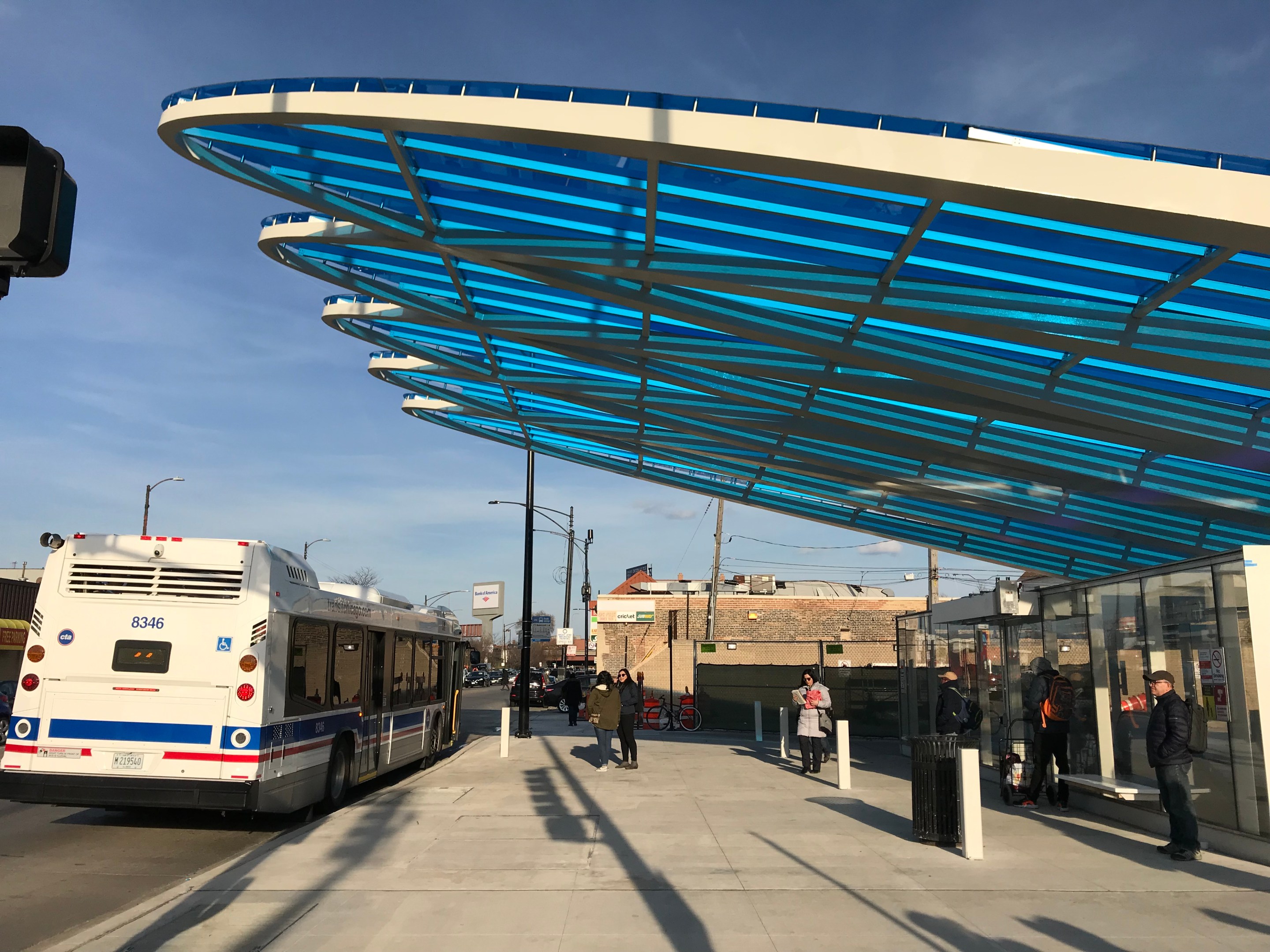Let me start out by saying that I like the design of the giant new canopy at the CTA's Belmont Blue Line station in Avondale, which was officially unveiled on Friday. On the other hand, I appreciate Googie architecture, defined on Wikipedia as "a form of post-modern architecture... influenced by car culture, jets, the Space Age, and the Atomic Age... popular among motels, coffee houses and gas stations." I'm also a huge fan of Superdawg, the legendary drive-in hotdog stand in Chicago's Gladstone Park, which shares a similar design aesthetic with the canopy. Others who don't share my taste in architecture might not appreciate the new station awning.
The new Belmont Blue Line station canopy and @Superdawg. Who wore it better? pic.twitter.com/6nD3SGzS03
— John Greenfield (@greenfieldjohn) March 29, 2019
But I've been seeing a lot of complaints on social media is that this major investment of taxpayer money is all show and no go, which isn't completely off-base. I've previously written about the fact that the Belmont rehab, part of the CTA's $492 million Your New Blue O'Hare branch renovation, doesn't include making the station wheelchair accessible. The CTA said adding elevators, and making necessary station modifications to accommodate them, was estimated to cost an additional $55 to $75 million.
Adam Ballard from the disability rights group Access Living Chicago told me that while the situation is "frustrating," he trusts the CTA's cost estimate and understands that their are other barriers to making stations accessible, such as the need to acquire adjacent properties for elevator shafts. He added that the situation is less disheartening than it would have been a few years ago because of the agency's recently announced All Stations Accessibility Program to make every ‘L’ stop wheelchair-friendly within the next 20 years. But not everyone agrees that the lack of elevators is acceptable.
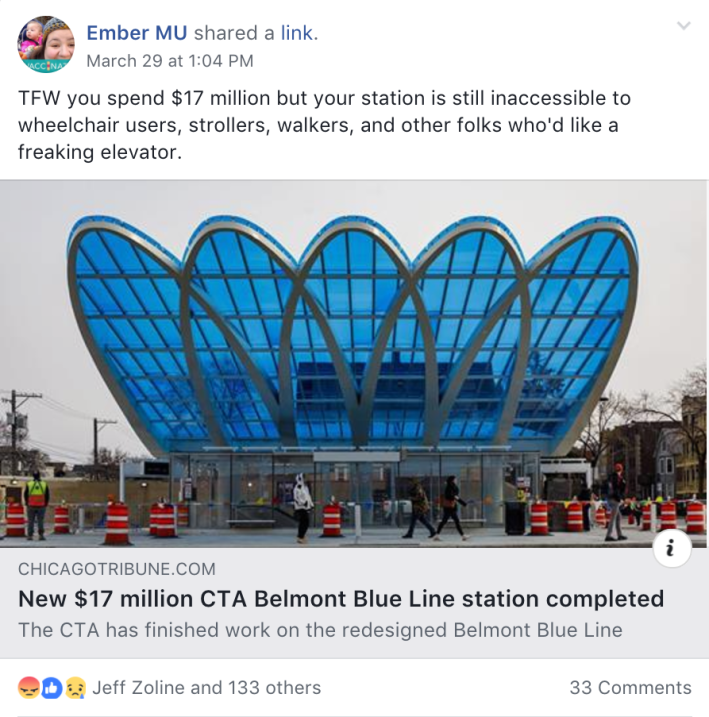
Amber Masselli-Urbach, who works at the Chicago Metropolitan Battered Women's Network, posted about the issue on the widely read New Urbanist Memes for Transit-Oriented Teens Facebook group. "It's disheartening to see so much money go into needed renovation without considering the needs of marginalized people, including wheelchair users," she told me.
The city of Chicago, of course, is touting the Belmont project as a major community investment. “Improving Chicago’s infrastructure is critical to keep our city moving and growing,” said Mayor Rahm Emanuel in a statement. “The CTA’s Belmont Blue Gateway project has not only created another showcase station for residents, but also helped create good-paying jobs to ensure our future is even brighter than our past.”
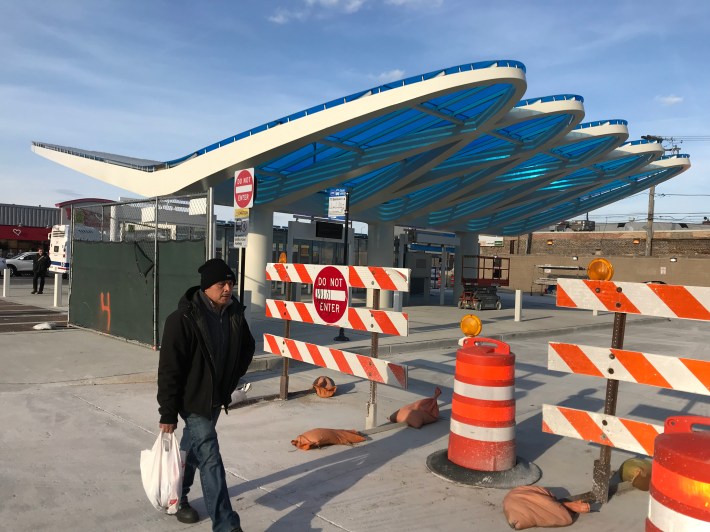
CTA President Dorval R. Carter, Jr. stated that the new station design creates "a safer, modern, more efficient travel environment with a one-of-a-kind experience that is only available here in the Avondale community.”
A city news release states that the canopy, designed by local architecture firm Carol Ross Barney, "creates a community gateway for the station and local neighborhood, while also visually enhancing the street-level entrance to the subway station."
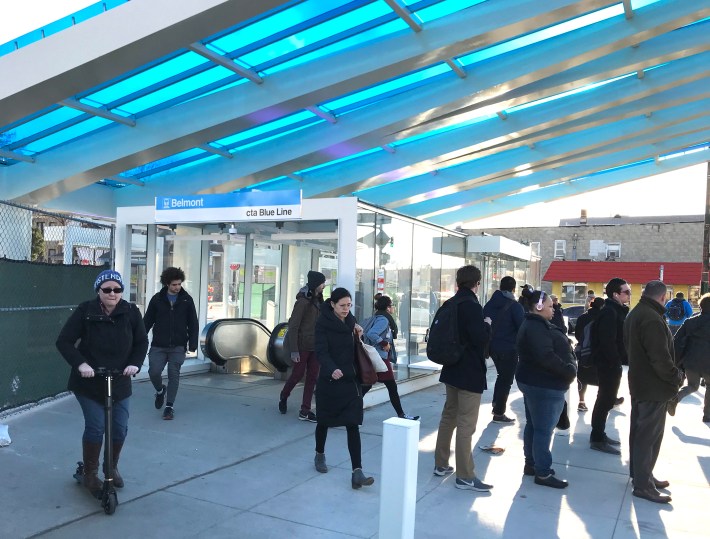
The problem with the canopy, to my eyes, is that it looks like it's not going to be particularly useful as a shelter from the elements for customers waiting to transfer to the #77 Belmont and #82 Kimball-Homan buses. It soars so high above the sidewalk that it looks like that riders will still get hit by blowing rain and snow unless they keep their backs to the box-shaped glass station entrance. A similar issue exists with the downtown Loop Link bus shelters, whose plentiful seating gets soaked when there's precipitation.
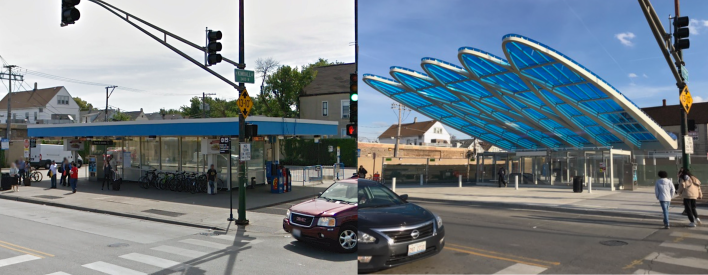
That's not to say that this project was a total boondoggle. Improvements include:
- New LED lighting, additional overhead heaters, repaved surface, and new signage in the bus waiting areas
- Enhanced communications systems, including new Bus and Train Tracker signs, and an upgraded public announcement system
- New LED lighting and repainted surfaces inside the station
- New concrete platform decking
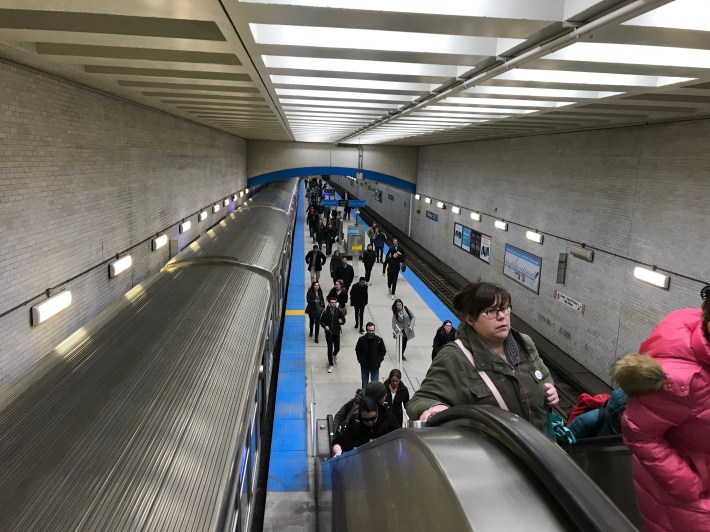
Most importantly, the project will create a semi-permanent bullpen on the south side of the station where westbound Belmont bus passengers will wait after paying their fares. Prepaid, all-door boarding has been piloted at this station since June 2019 during the evening rush, although the timesaving feature never gained traction on Loop Link or anywhere else in the system.
A CTA employee, who asked to be anonymous, told me that prepaid boarding is expensive to operate here because it requires paying an employee to supervise a fare card reader and the pullpen. (Even after the project is completed, it would otherwise still be possible for people to walk into the bullpen from the street and board a bus without paying.) But the prepaid boarding system does reduce bus "dwell" time and it's popular with customers, so the CTA can't get rid of of it, the employee said.

While the Belmont station initiative wasn't a complete waste of money, it does appear that much, if not most, of the cash went into the fancy canopy that turns the station into a nicer-looking conversation piece. Why was this so important to the city of Chicago? Probably to spur more development and property tax revenue generation in Avondale, the next neighborhood to fall as gentrification and displacement moves northwest up the Blue Line from Wicker Park and Logan Square.
